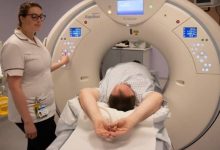University of South Carolina Medical School Acceptance Rate

The Medical School at University of South Carolina-Columbia (Medical School at University of South Carolina-Columbia) was formed in 1977 and is based in Columbia, South Carolina. With a total enrollment of 35,470 students, the University of South Carolina-Columbia is a public, four-year institution that offers both undergraduate and graduate degrees. The acceptance rate at the University of South Carolina School of Medicine is 68.00 percent, with 104 first-year students enrolling.
For the academic year 2020-2022, the average tuition and fees at the University of South Carolina School of Medicine are $43,488 for South Carolina residents and $89,050 for non-residents. The enrolled students’ average GPA is 3.81, and their average MCAT score is 508.
Rankings for the University of South Carolina in 2022
Best Medical Schools: Research is ranked No. 90 (tie) and Best Medical Schools: Primary Care is ranked No. 76 (tie). Schools are typically ranked based on the performances of the school using a variety of excellence factors.
The deadline to apply to the University of South Carolina School of Medicine is November 1. The University of South Carolina charges a $95 application fee.
Related Post:What is the University of Manitoba Acceptance Rate ?
FAQs
Is there a set of requirements for entrance into the program?
Although no prerequisite courses are required, it is strongly recommended that applicants complete two semesters of each of the following: General Biology, General Chemistry, Organic Chemistry, General Physics, and Biochemistry. It is also strongly recommended that applicants complete one semester of each of the following: Introductory Psychology and Introductory Sociology.
What qualities do they look for in a candidate?
When it comes to hiring, they take a holistic approach. GPA and MCAT scores play a big role in getting an interview, after which we’re searching for the other qualities that make outstanding doctors. Personality qualities, leadership experience, volunteering, clinical exposure, and shadowing experiences are all examples of these.
Does the school have a regional campus?
Yes. For third and fourth year MUSC medical students in Anderson, SC, the Primary Care Parallel Track at MUSC AnMed Health Clinical Campus provides thorough clinical training. Students in this track participate in additional education opportunities with a primary care emphasis, in addition to the mandatory clerkships and selecting opportunities. A longitudinal continuity clinic with an underprivileged population, expanded ambulatory experiences during clerkships, longitudinal professor rounds throughout the clinical years, a longitudinal wellness curriculum, service learning initiatives, and more are just a few of the enhanced experiences.
Is there a special course for students who want to work in primary care?
Yes. For third and fourth year MUSC medical students in Anderson, SC, the Primary Care Parallel Track at MUSC AnMed Health Clinical Campus provides thorough clinical training. Students in this track participate in additional education opportunities with a primary care emphasis, in addition to the mandatory clerkships and selecting opportunities. A longitudinal continuity clinic with an underprivileged population, expanded ambulatory experiences during clerkships, longitudinal professor rounds throughout the clinical years, a longitudinal wellness curriculum, service learning initiatives, and more are just a few of the enhanced experiences.
Is there a minimum GPA requirement for applicants? What is the average grade point average?
There is no minimum GPA requirement for applicants. Students with GPAs below 3.4, on the other hand, are often encouraged to pursue a graduate degree in order to become more competitive applicants. On a scale of 4.0, the current class’s average GPA is 3.7.
What is the lowest and highest MCAT score?
To be considered for an interview in South Carolina, applicants must have a 496 on the MCAT exam. On the MCAT exam, the current class’s average score is 511. To be selected for interviews, out-of-state applicants must have a score of 511 or above and have strong ties to South Carolina.
Do you accept applications from other countries?
To be eligible for admission to the MD degree program, international applicants must hold a permanent resident visa (green card). International students without a permanent resident visa may apply to the MSTP (combined MD/PhD degree program). Applicants with Deferred Action for Childhood Arrivals (DACA) status may apply to the MD program and be considered for admission to the College of Medicine according to the same norms and procedures as other applicants. Those interested in the MD/PhD program should visit the MD/PhDApplication Information web page or contact the MD/PhD Program Coordinator.
What happens once I submit my application?
An additional MUSC application will be emailed to you after you complete your AMCAS application. Please keep in mind that AMCAS can take anywhere from 4 to 6 weeks to verify your application. If you are eligible for an interview, your whole application will be examined, and you will be notified of your interview date via e-mail. Interviews for Early Decision are set for September. Regular interviews will continue through March as part of our rolling admissions cycle. Any MUSC email communications should be checked in your spam folder.
Medical Schools with the Easiest Admissions
School of Medicine and Health Sciences, University of North Dakota
The School of Medicine & Health Sciences at the University of North Dakota provides eight healthcare programs, including the state’s sole four-year MD degree. UND, North Dakota’s oldest university, collaborates with clinical facilities across the state to provide students with training following their second year.
UND admits approximately 28% of medical school candidates, making it one of the most competitive medical schools. The university commits to accepting a particular number of qualified candidates each year in order to provide educational opportunities for American Indian students.
Related Post:Case Western Reserve University Medical School Ranking
MCAT scores, letters of recommendation, and an experiences and traits portfolio are all required of prospective students. The admissions office does not have a minimum MCAT score requirement, however all applicants must have a 3.0 GPA. In 2019, the average accepted applicant had a 507 MCAT and a 3.5 GPA.
Medical School at the University of Massachusetts
The University of Massachusetts Medical School in Worcester offers training in a variety of medical fields, with a focus on general care. Both in-state and out-of-state citizens can enroll in the school’s MD and MD/Ph.D. programs.
UMMS has ties with various community hospitals and health centers in the area, as well as two acute care hospitals. Clinical requirements are usually completed at one of these venues by students.
Only 23% of applicants are accepted by UMMS. All applicants must have earned a bachelor’s degree from an authorized university and submit MCAT results as well as letters of recommendation. In addition, they must participate in an interview. The average medical student has a 3.7 GPA and an MCAT score in the 88th percentile, according to UMMS, which does not impose GPA or MCAT cutoffs.
The University of Missouri is located in Columbia, Missouri. The University of Missouri-Kansas City School of Medicine
Six medical programs with 19 specialities are available at the University of Missouri-Kansas City. A six-year BA/MD degree or a regular four-year MD program are available to students. Clinical experiences are incorporated into these curricula as early as the first semester. Six renowned hospitals have partnered with UMKC to give students with fieldwork opportunities.
Applicants for the BA/MD program must have a minimum GPA of 3.0 and an ACT or SAT score of 24 or 1160. MD applicants must have a minimum MCAT score of 500 to be considered. Roughly 645 medical students are enrolled at UMKC, with about 20% of applicants being accepted.
School of Medicine at the University of Nevada, Reno
The School of Medicine at the University of Nevada, Reno provides a standard MD degree, as well as a BS/MD program and a post-baccalaureate certificate program. Students can also pursue dual degrees such as an MD/MPH, an MD/MBA, or an MD/Ph.D. at the university.
The school maintains a 3-to-1 student-to-faculty ratio, giving it a small community feel. During their first year, students begin working in clinical settings.
In-state students must have a minimum GPA of 2.8 and an MCAT score of 497 or above. Applicants from out of state must have a minimum GPA of 3.3 and an MCAT score of 500 or higher. Approximately 12% of applications are accepted.
Shreveport, Louisiana State University’s Health Sciences Center
LSU Health Shreveport was the first state institution in Louisiana to offer medical education, opening its doors in 1969. The university is still the sole medical school in north Louisiana, and one of just three in the state.
For students interested in conducting research, LSU Health Shreveport offers collaborative Ph.D. programs with Louisiana Tech. There are also 43 fully recognized residency and fellowship programs available at the college.
The college admits about 20% of medical school applicants and does not use GPA or MCAT cutoffs to determine acceptance. The average student, on the other hand, has a 3.7 GPA and a 505 MCAT score.
Shreveport, Louisiana State University’s Health Sciences Center
LSU Health Shreveport was the first state institution in Louisiana to offer medical education, opening its doors in 1969. The university is still the sole medical school in north Louisiana, and one of just three in the state.
For students who would like to conduct research, LSU Health Shreveport offers collaborative Ph.D. programs with their Louisiana Tech. There are also 43 fully recognized residency and fellowship programs available at the college.
The college admits about 20% of medical school applicants and does not use GPA or MCAT cutoffs to determine acceptance. The average student, on the other hand, has a 3.7 GPA and a 505 MCAT score.
How Long Does Medical School Take to Finish?
After earning a bachelor’s degree in a related discipline, students often apply to medical school. The average MD program lasts four years longer. Graduates must subsequently pursue a residency program that lasts 3-7 years.
Students who want to specialize may need more time to get their MD. Some colleges, however, provide dual-degree options, such as BS/MD and MD/Ph.D. programs. These programs allow students to finish their degree requirements while also allowing them to enter the residency part of their education early.
What Are the Requirements for Medical School Admission?
The specific prerequisites for admission to medical school differ depending on the program. Prerequisite study in basic subjects such as biology, chemistry, genetics, psychology, and physics is required by most schools. Many aspiring doctors take these courses while studying for their bachelor’s degree.
College transcripts, letters of recommendation, MCAT scores from the last three years, and a CV are often required of applicants. Some institutions use GPA and MCAT cutoffs to choose candidates, while others look at more than simply academic performance.
Why Is It So Difficult to Get Into Medical School?
Obtaining a medical degree opens up a plethora of profitable and satisfying employment options. Physicians made a median annual salary of more than $200,000 in 2019, according to the Bureau of Labor Statistics. Working in medicine allows you to make a beneficial impact on society and the lives of individual patients through research and clinical practice, in addition to offering a good wage.
Related Post:Case Western Reserve University Medical School Ranking
Because of these advantages, pursuing a profession in healthcare is becoming increasingly popular, resulting in increased competition for medical school admissions. The average acceptance rate for medical school in 2019 was only 6.7 percent, according to U.S. News & World Report. Furthermore, schools are creating more strict admission standards for medical programs as a result of the strong demand. Many students believe that a medical degree is simply out of reach because of these requirements.
What Are the Requirements for Medical School Admission?
The specific prerequisites for admission to medical school differ depending on the program. Prerequisite study in basic subjects such as biology, chemistry, genetics, psychology, and physics is required by most schools. Many aspiring doctors take these courses while studying for their bachelor’s degree.
College transcripts, letters of recommendation, MCAT scores from the last three years, and a CV are often required of applicants. Some institutions use GPA and MCAT cutoffs to choose candidates, while others look at more than simply academic performance.
How Long Does Medical School Take to Finish?
After earning a bachelor’s degree in a related discipline, students often apply to medical school. On average, an MD program typically lasts four years longer. Graduates are expected to undertake a residency program that can last 3-7 years.
Students who want to specialize may need more time to get their MD. Some colleges, however, provide dual-degree options, such as BS/MD and MD/Ph.D. programs. These programs allow students to finish their degree requirements while also allowing them to enter the residency part of their education early.
What Are the Requirements for Medical School Admission?
The specific prerequisites for admission to medical school differ depending on the program. Prerequisite study in basic subjects such as biology, chemistry, genetics, psychology, and physics is required by most schools. Many aspiring doctors take these courses while studying for their bachelor’s degree.
College transcripts, letters of recommendation, MCAT scores from the last three years, and a CV are often required of applicants. Some institutions use GPA and MCAT cutoffs to choose candidates, while others look at more than simply academic performance.
Why Is It So Difficult to Get Into Medical School?
Obtaining a medical degree opens up a plethora of profitable and satisfying employment options. Physicians made a median annual salary of more than $200,000 in 2019, according to the Bureau of Labor Statistics. Working in medicine allows you to make a beneficial impact on society and the lives of individual patients through research and clinical practice, in addition to offering a good wage.
Because of these advantages, pursuing a profession in healthcare is becoming increasingly popular, resulting in increased competition for medical school admissions. The average acceptance rate for medical school in 2019 was only 6.7 percent, according to U.S. News & World Report. Furthermore, schools are creating more strict admission standards for medical programs as a result of the strong demand. Many students believe that a medical degree is simply out of reach because of these requirements.
Related Post:University of Utah Medical School Ranking
What Are the Requirements for Medical School Admission?
The specific prerequisites for admission to medical school differ depending on the program. Prerequisite study in basic subjects such as biology, chemistry, genetics, psychology, and physics is required by most schools. Many aspiring doctors take these courses while studying for their bachelor’s degree.
College transcripts, letters of recommendation, MCAT scores from the last three years, and a CV are often required of applicants. Some institutions use GPA and MCAT cutoffs to choose candidates, while others look at more than simply academic performance.








